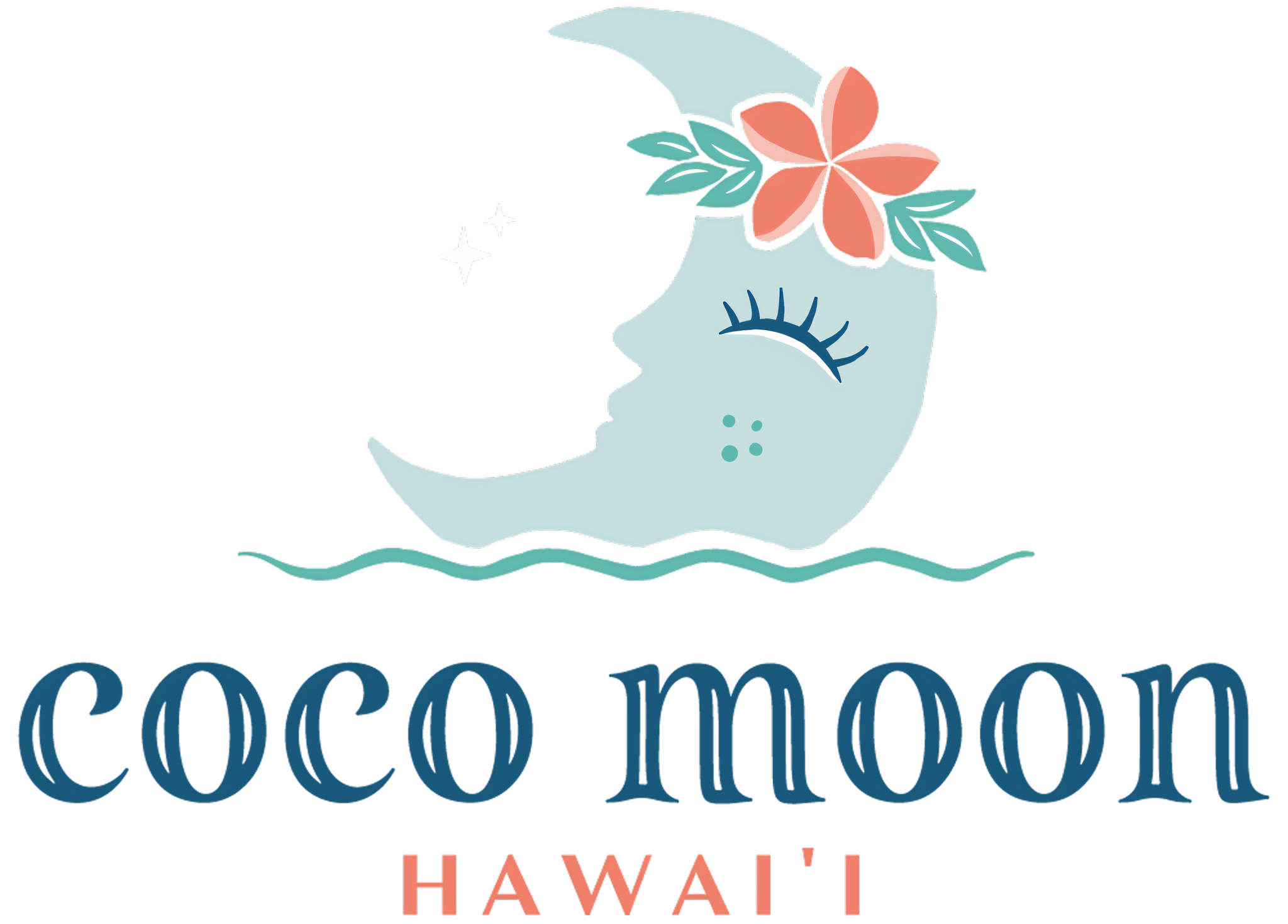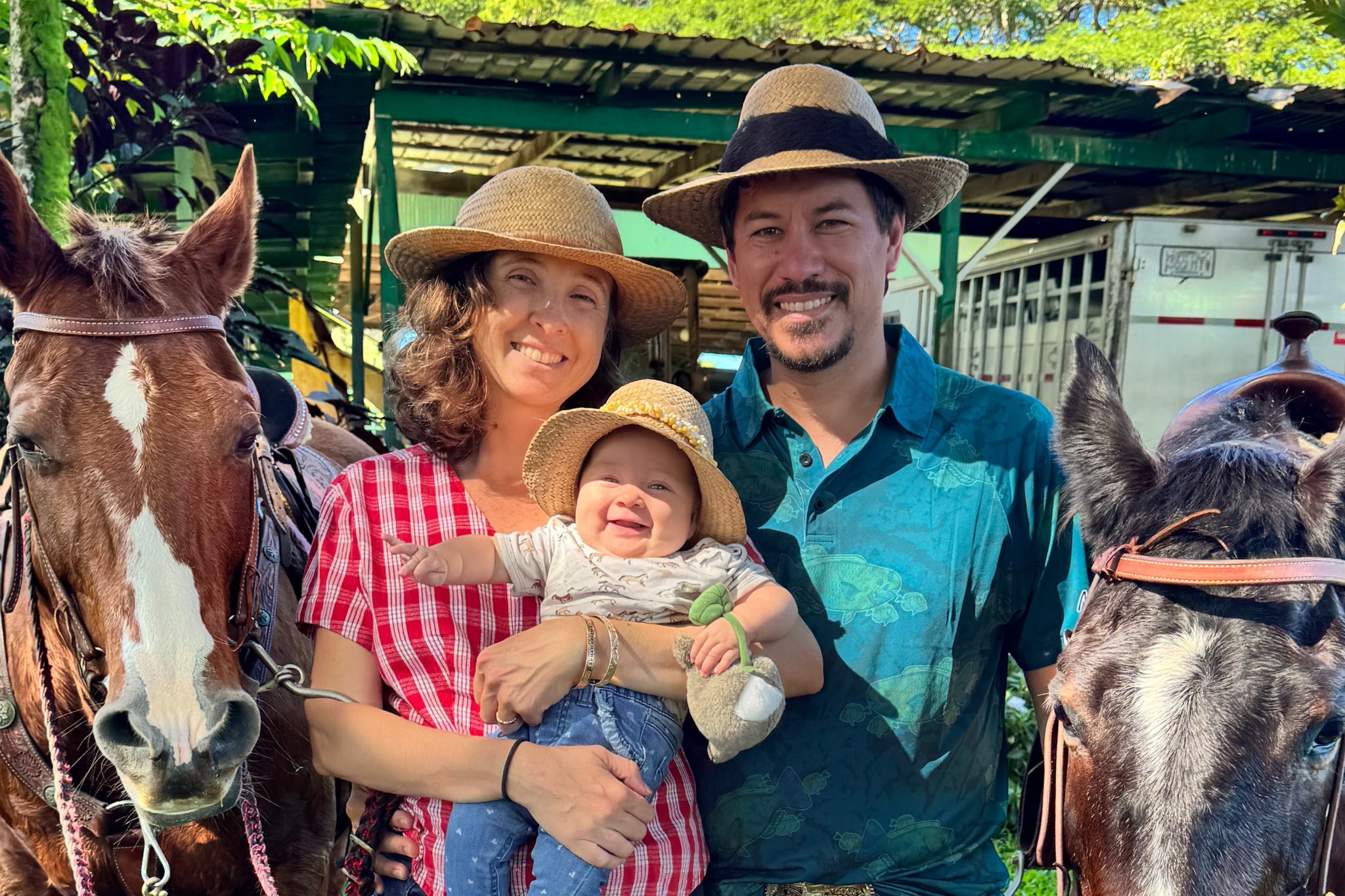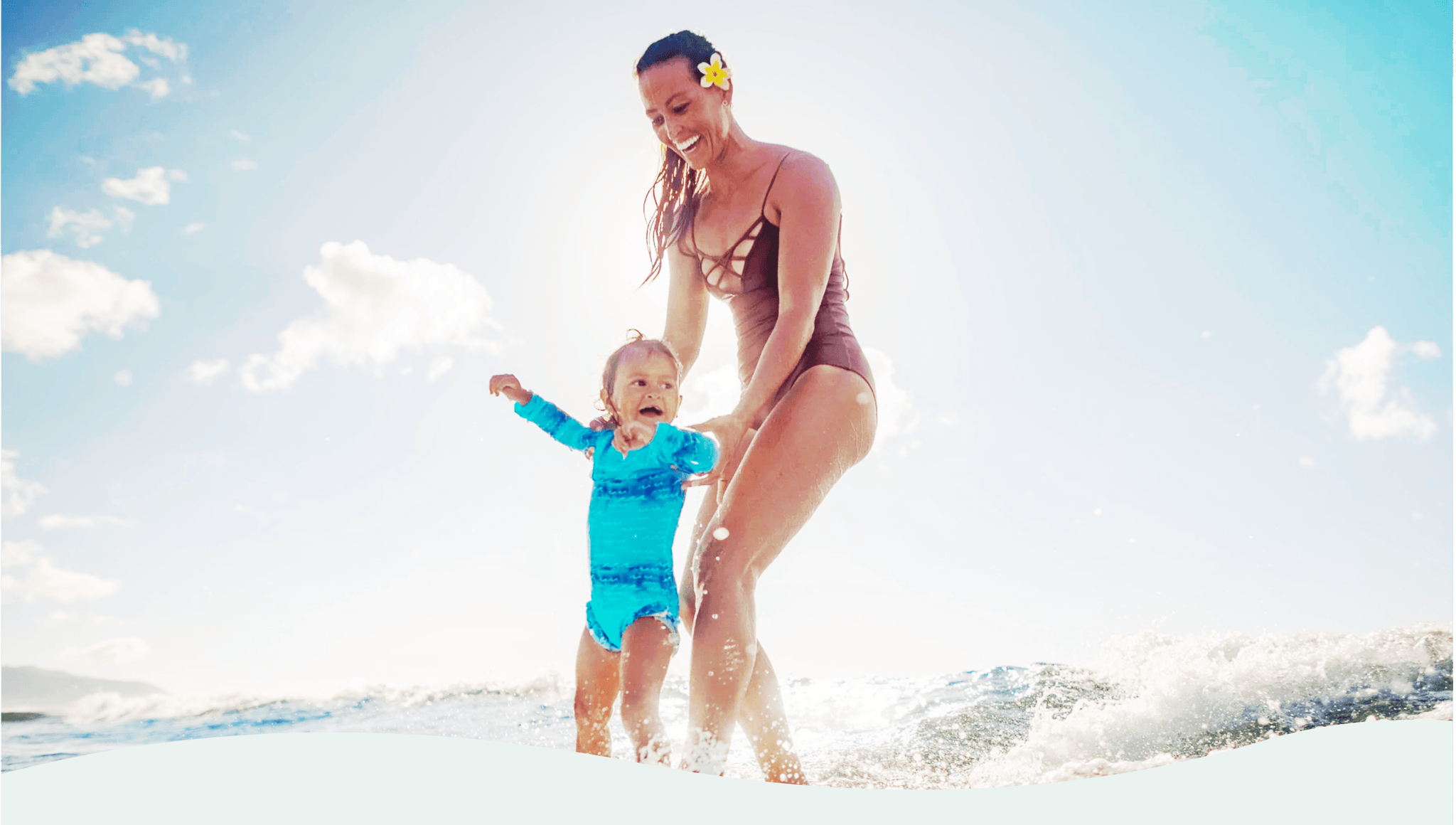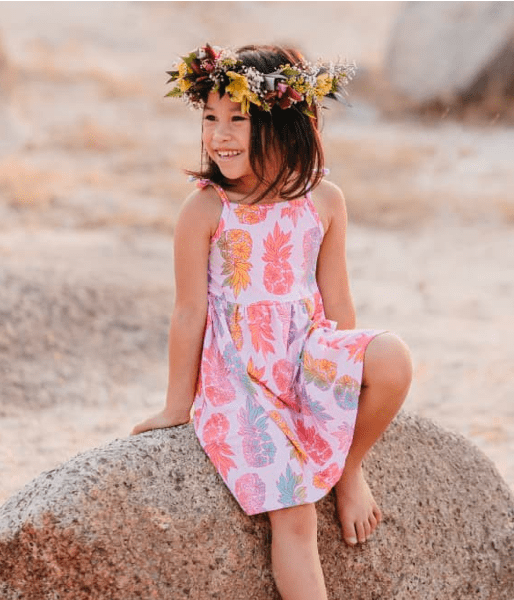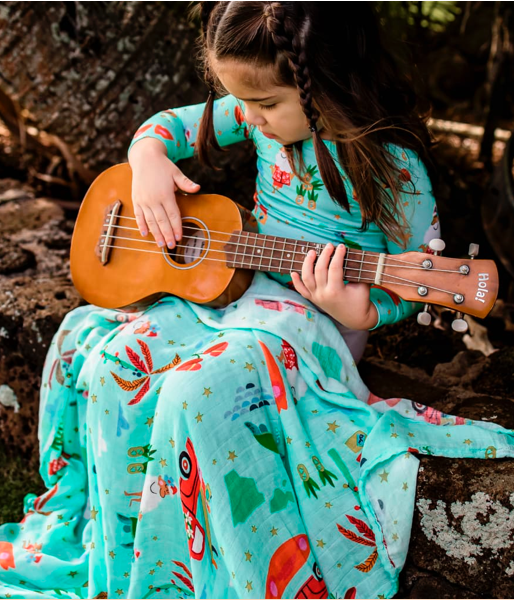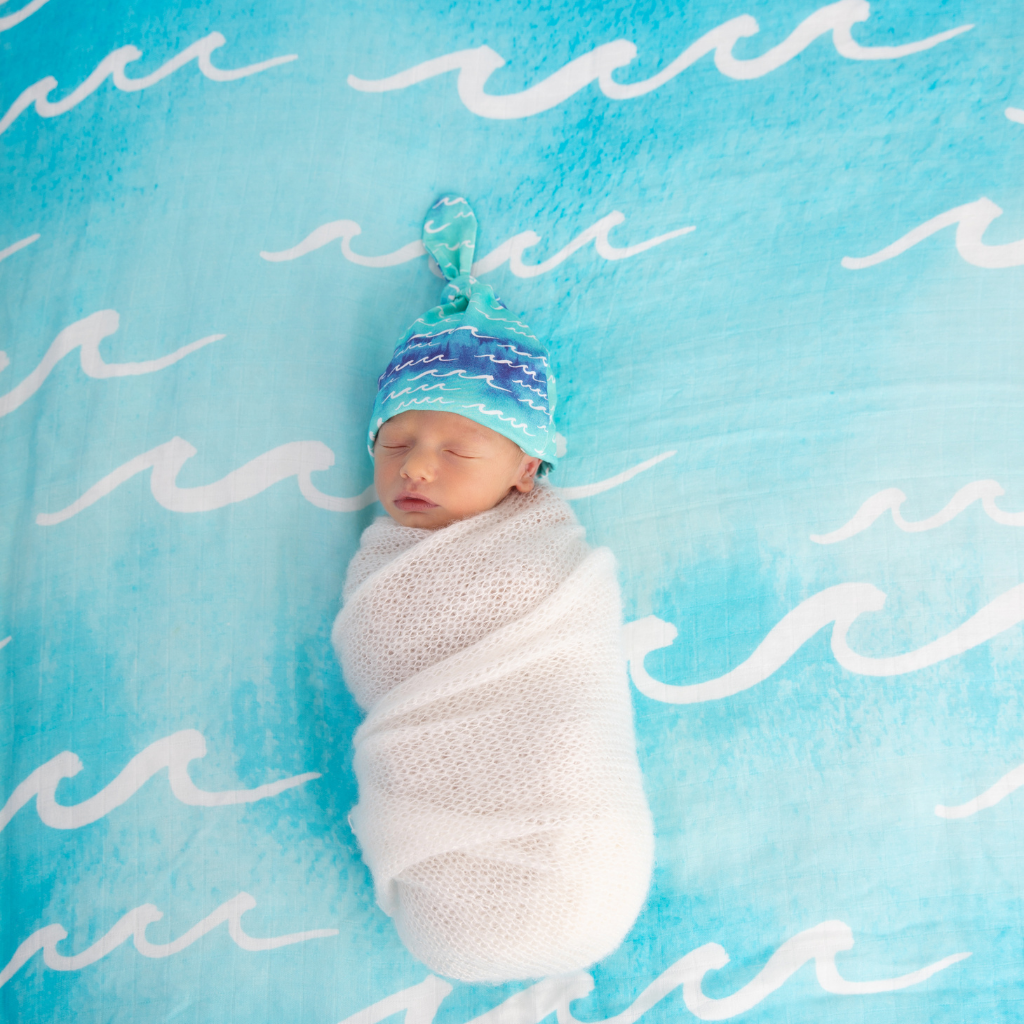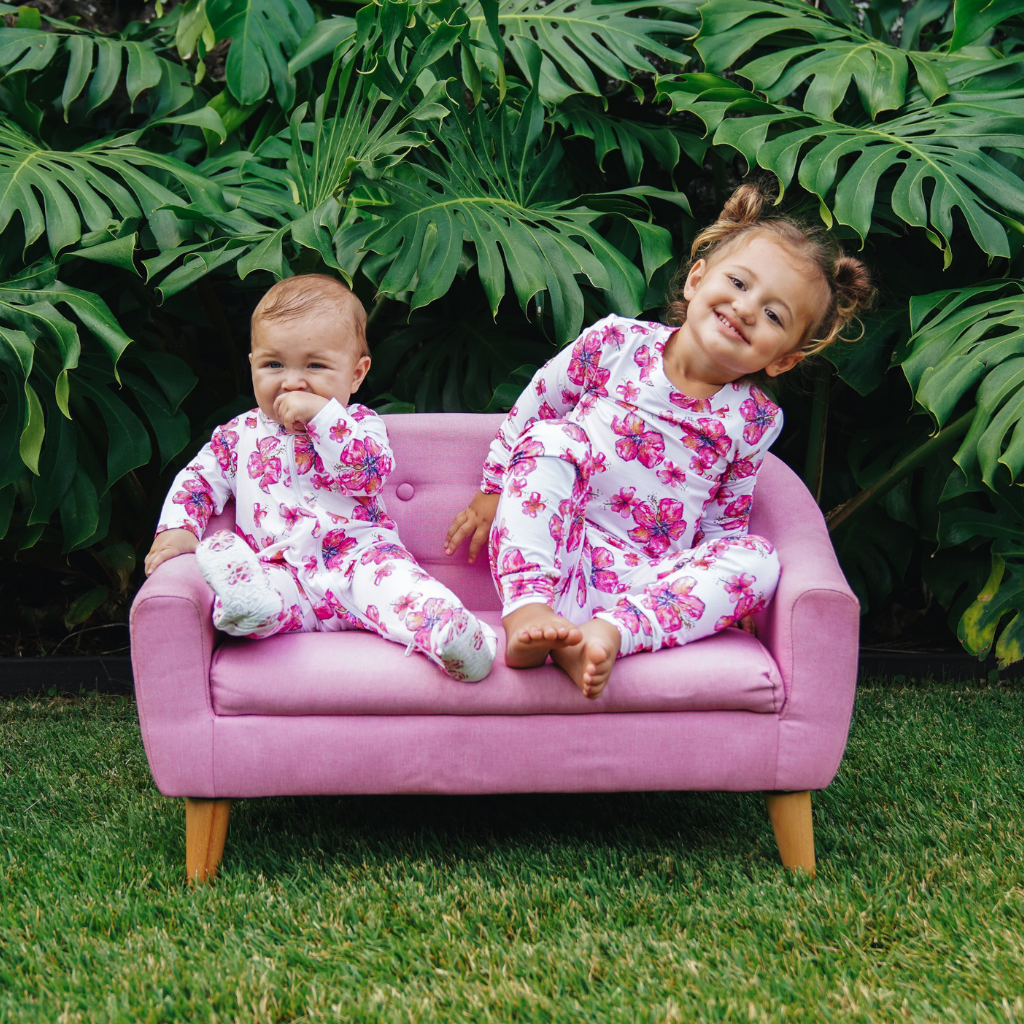🌺 Māmā of the Month: Sydney Wang
Speech-Language Pathologist, Founder of Walaʻau Therapy, and Proud Mama
From the heart of Hilo comes a story rooted in aloha, advocacy, and the transformative power of communication. This month, we’re honored to spotlight Sydney Wang, a speech-language pathologist, small business owner, and new mama who is making a meaningful difference for families across Hawaiʻi Island.
After growing up in Hilo and seeing firsthand how limited therapeutic resources were for local families, Sydney set out to change that. Her journey—from supporting her sister with autism to founding Walaʻau Therapy, one of the first multidisciplinary therapy clinics in East Hawaiʻi—is a testament to what happens when compassion meets community.
Today, she balances life as a mom to baby ʻAlawī with running a growing clinic, advocating for families, and spreading awareness about speech-language support. Read on to learn more about Sydney's inspiring path, how motherhood has changed her perspective, and what Walaʻau truly means to her.
💬 On Starting Walaʻau Therapy
“Growing up in Hilo in the 90s and 2000s, there were very limited resources for therapy services—from birth through adulthood,” Sydney shares. “My mom was a huge advocate for my sister, pushing for an accurate diagnosis and appropriate school placement. That experience shaped me.”
After living and working abroad, Sydney returned to Hilo just before the pandemic in 2020. She started small—working remotely, applying for a business license, and renting a single room downtown. But word spread quickly. Within six months, she expanded to a larger space, hired more therapists, and began accepting referrals from across the island.
Today, Walaʻau Therapy is a thriving, community-rooted clinic with five therapy rooms, a sensory gym, outdoor play area, and a dedicated team of speech-language pathologists. They also share their space with Keiki Therapy LLC., offering occupational and physical therapy for keiki on the Big Island.
🌱 What “Walaʻau” Means
“Walaʻau means any form of communication,” Sydney explains. “Whether it's gestures, sounds, words, or full conversations—it's all connection.”
The name is more than a title. It reflects her clinic's mission to honor every form of expression, from eye gaze and body language to assistive communication devices. “Walaʻau is everything to us,” she says. “It keeps us connected.”
👶 Early Motherhood & Finding Balance
Sydney became a mom in 2023, and her daughter, ʻAlawī, has already traveled to Kauaʻi, California, Washington, and the Cook Islands—with Norway and the Faroe Islands next on the list. Travel, she says, is a core family value.
“I'm simply amazed watching her grow,” she says. “Of course, there are moments of exhaustion, but her smile makes it all magic.”
While she's stepped back from in-person therapy sessions, Sydney now runs Walaʻau remotely—coordinating care, managing insurance, scheduling, and supporting her team during precious nap time hours (or while playing with toy dim sum sets and walking around the yard with ʻAlawī).
“It's a true balancing act,” she shares, “but I'm lucky to have an amazing team who keeps things running at the clinic.”
🗣️ When to Seek Speech-Language Support
Sydney is passionate about helping families recognize early signs that a child might benefit from speech-language therapy—and about breaking the stigma or confusion that often surrounds it.
“When looking into early signs,” she explains, “you want to consider four main areas of development: speech sound development, expressive language, receptive language, and social-emotional awareness.”
Here's how she breaks it down:
Speech Sound Development
If a child is only using vowels between 12–24 months and not producing consonant sounds (like ba, ma, da, pa) or strings of babbling, that could signal a delay. By age 3, a child should be understood by familiar adults about 50–70% of the time, and by age 4, they should be 75–90% intelligible—using most consonant sounds like t, d, k, g, n, s, z, sh, ch, j, y. By age 5, they should be nearly 100% understandable.
Expressive Language
Between 12–18 months, children typically use 3–20 words, growing to 50 words by 18–24 months. By 2 years old, they should begin combining two words (like “mama up” or “want juice”).
Receptive Language
By 18 months, keiki should understand up to 50 words, recognize their name, respond to “no”, follow simple commands, and point to common objects or body parts.
Social-Emotional Awareness
Watch for signs like turn-taking games (e.g., peek-a-boo), imitating actions, making eye contact, smiling during interaction, showing objects to share, requesting help through gestures or vocalizing, and engaging with toys in different ways by 18 months.
“If a delay is seen in any of these areas,” Sydney says, “an evaluation by a Speech-Language Pathologist can help assess your child's development and guide next steps.”
In most cases, a referral from a pediatrician is required before starting therapy.
❌ Busting a Common Myth
“One big misconception is that speech therapy is only about speech sounds,” Sydney shares.
In reality, the field of Speech-Language Pathology encompasses much more—from language comprehension and expression to feeding, swallowing, voice, cognition, and social skills. That’s why the term speech therapist doesn't fully capture what today's specialists do.
She also emphasizes the difference between speech and language:
-
Speech refers to how we produce sounds (e.g., “puh” in pop or “kuh” in cat).
-
Language includes both expressive communication (using words and forming sentences) and receptive language (understanding directions or recognizing objects).
“Understanding this difference helps parents know what support their child might need—and how we can help.”
🏡 Life in Hilo
“I love how Hilo is just one big extended family,” Sydney says. “The clinic feels full circle—I've worked with classmates, teachers, and longtime friends of my grandparents. It's what makes raising my family here so special.”
💛 Coco Moon Favorites
As a mom, Sydney has a soft spot for Coco Moon coveralls:
“The double zipper, the fold-over feet—perfect for cold, rainy Hilo mornings! And my husband tells every new dad about the bamboo stretch—makes it easier for his big hands to dress our daughter.”

Sydney's journey is a beautiful reminder of what's possible when care, culture, and community come together. Through her work at Walaʻau and her role as a new mama, she's helping families across Hawaiʻi Island feel more supported, empowered, and seen.
👉 Want to learn more or connect with Sydney’s clinic?
Visit www.walaautherapy.com to explore services, resources, and support for your keiki.
